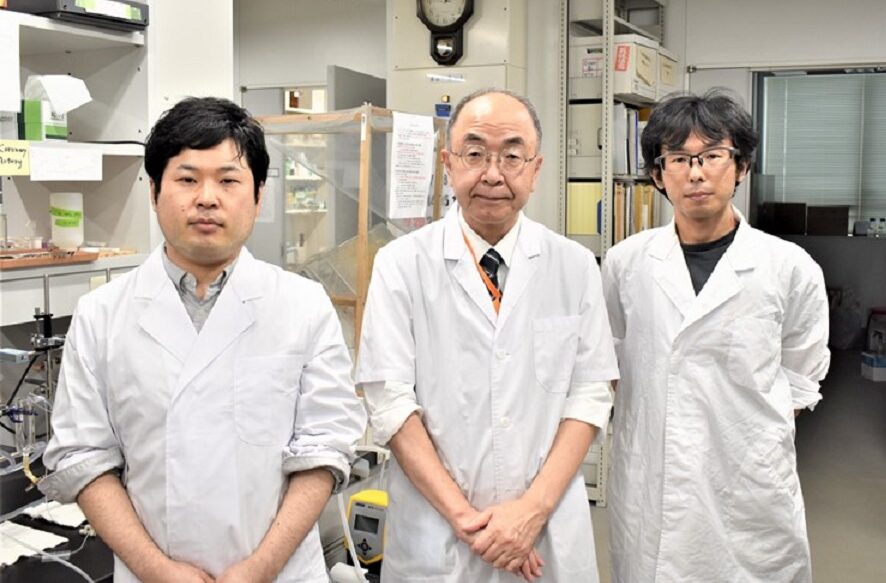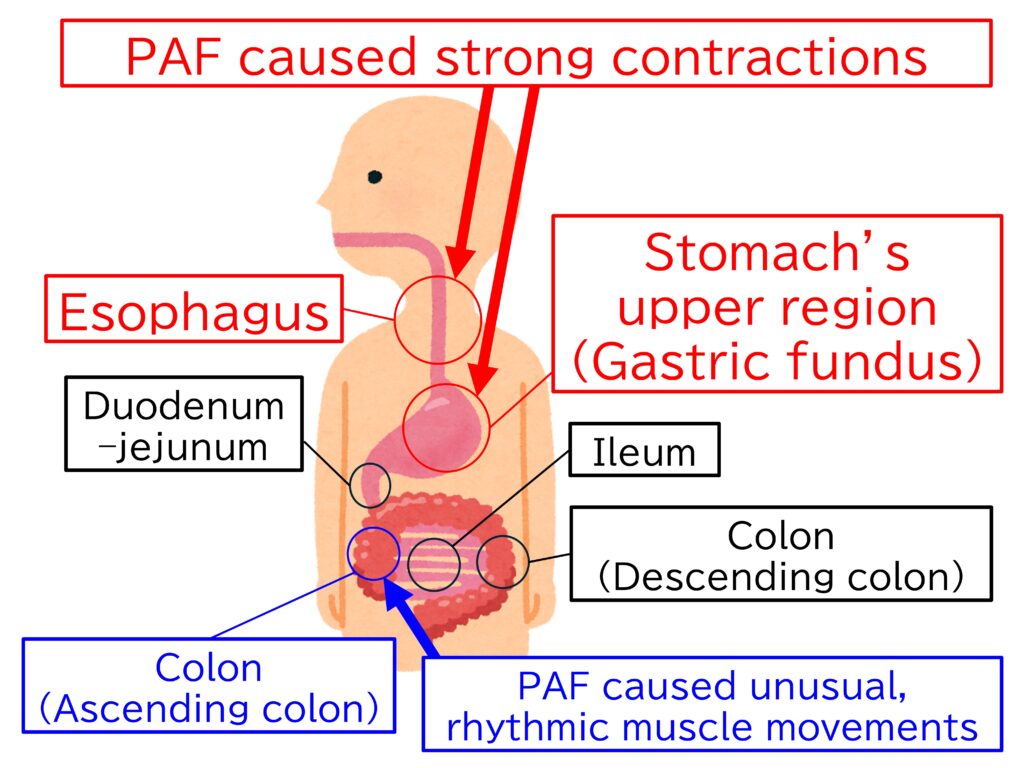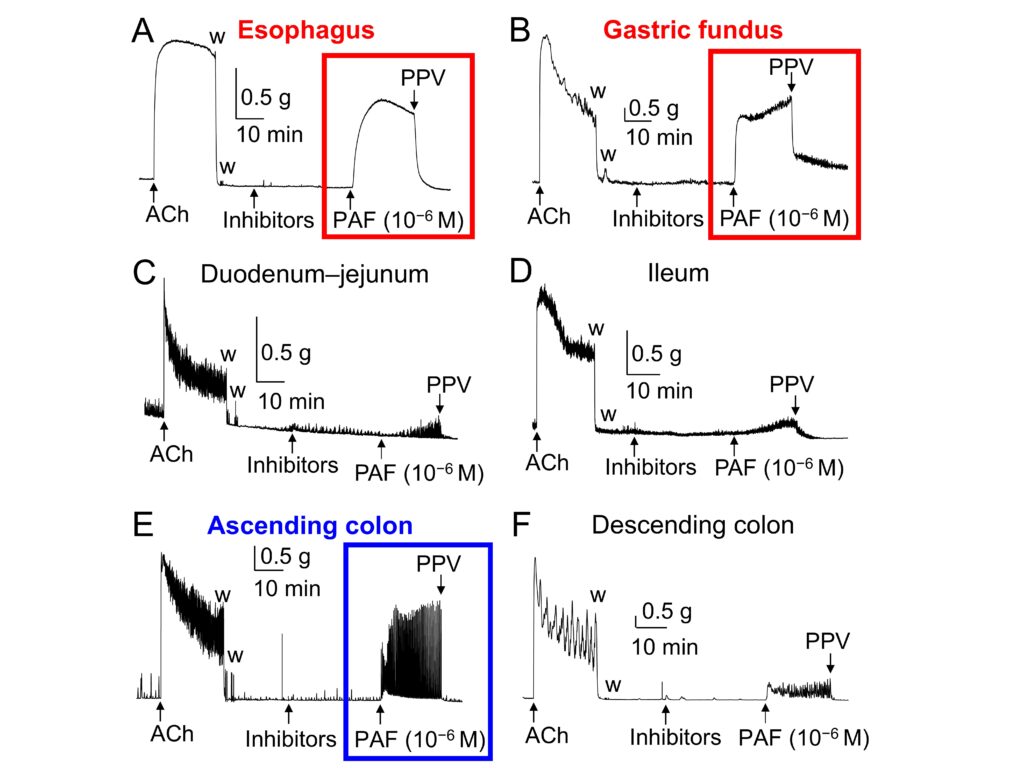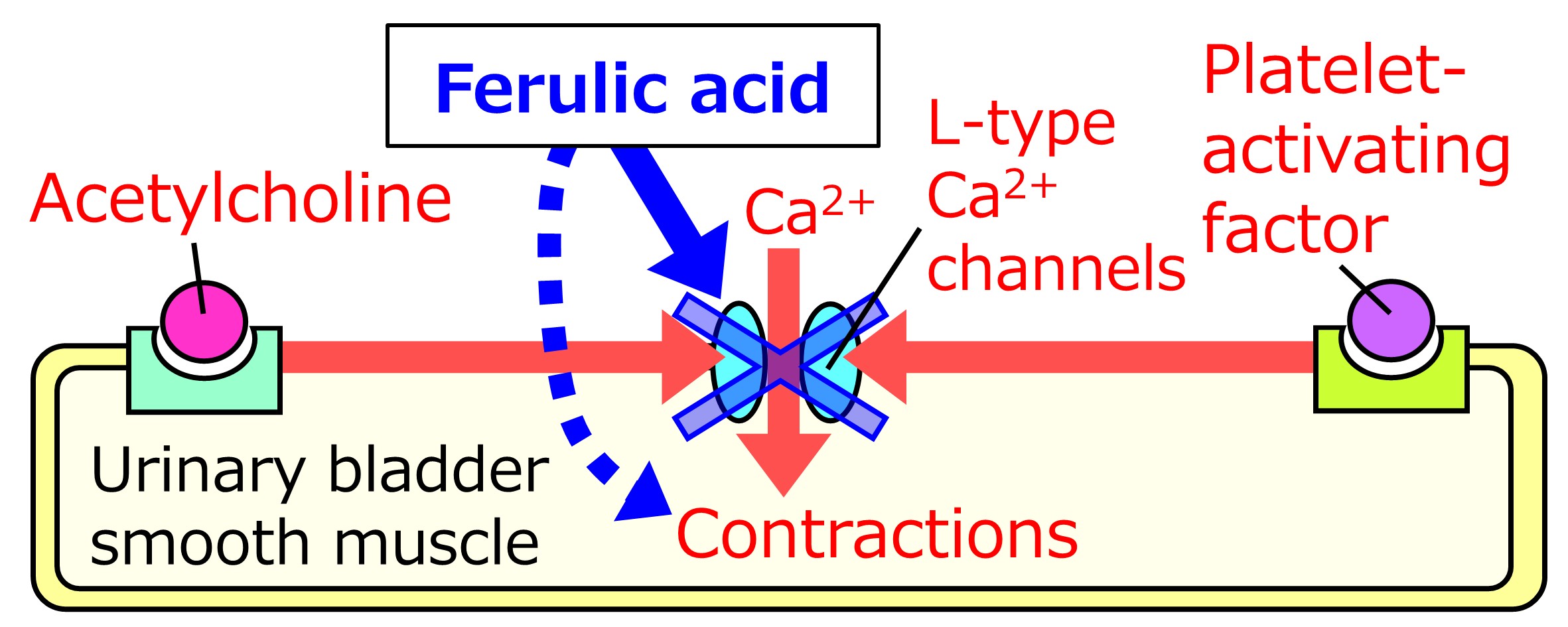May 13, 2025
A Key Chemical Triggers Powerful Muscle Movements in the Esophagus and Stomach: New Clues to Digestive Reactions and Allergies

From left: Dr. Keisuke Obara, Dr. Yoshio Tanaka, Dr. Kento Yoshioka
A research group led by Dr. Kento Yoshioka, Dr. Keisuke Obara, and Professor Yoshio Tanaka from the Department of Chemical Pharmacology, Faculty of Pharmaceutical Sciences, Toho University, has discovered that a natural substance in the body, known as platelet-activating factor (PAF), can strongly stimulate muscle movements in parts of the digestive system, especially the esophagus and the upper part of the stomach.
PAF is a chemical produced in the body during allergic reactions and inflammation. While it was already known to affect muscles in some parts of the digestive tract, its effects on the esophagus had not been clearly studied until now.
In this study, the research group investigated how PAF affects different sections of the digestive tract in rats. They found that PAF caused strong contractions—especially in the muscles of the esophagus and the stomach’s upper region (called the gastric fundus) (Figures 1 and 2). These two regions share a common origin in early development, which may explain their similar reactions to PAF.
Interestingly, in other parts of the intestine, such as the small intestine and colon, PAF had weaker effects. However, it still caused unusual, rhythmic muscle movements in the colon (ascending colon) (Figures 1 and 2), which may be linked to chronic digestive diseases like inflammatory bowel disease.
These findings suggest that PAF could play a key role in both normal and abnormal digestive reactions, such as those triggered by food allergies or acid reflux. Since PAF is also involved in severe allergic reactions (like anaphylaxis), the study helps explain why people with these conditions sometimes experience stomach or esophageal discomfort.
This research could lead to new treatments using drugs that block PAF’s effects, potentially easing symptoms in digestive and allergic disorders.

Figure 1.A schematic summary of this study

Figure 2.Comparative Effects of PAF on Smooth Muscles in Different Regions of the Rat Gastrointestinal Tract
This figure shows how a substance called PAF (platelet-activating factor) affects the muscles in different parts of the digestive tract in rats. Panels A–F show the muscle movements in six regions: the esophagus (A), upper stomach (B, gastric fundus), duodenum–jejunum (C), ileum (D), ascending colon (E), and descending colon (F). These muscles normally help move food through the digestive system. When PAF was applied, it caused strong contractions and increased tension, especially in the muscles of the esophagus (A) and upper stomach (B). These effects were weaker or more varied in the lower parts of the digestive tract. However, it still caused unusual, rhythmic muscle movements in the ascending colon (E). This experiment suggests that PAF can trigger abnormal movements or spasms in certain digestive organs, and this may help scientists better understand digestive disorders where such symptoms occur.
Journal:
Biological and Pharmaceutical Bulletin (May 9, 2025)
Title:
Platelet-activating factor (PAF) induces strong mechanical activities accompanied by basal tension increases in esophageal and gastric fundus smooth muscles from rat
Authors:
Keisuke Obara, Sana Takahashi, Miho Otake, Mako Fujiwara, Mio Yamashita, Azusa Murata, Kento Yoshioka, Yoshio Tanaka
DOI: 10.1248/bpb.b25-00125
Abstract URL: https://doi.org/10.1248/bpb.b25-00125
READ MORE RESEARCH NEWS - PHARMACEUTICAL SCIENCES
Undergraduate Programs
– Medicine
– Pharmaceutical Sciences
– Science
– Nursing
– Health Science
Graduate Programs
–Medicine
–Pharmaceutical Sciences
–Science
–Nursing
RESEARCH
– News
– Guidelines & Policies
– Support Offices
– Facilities
– Security Export Control
Non-Degree Programs
– Clinical Elective Program
– International Physician Observership Program

.jpg)


